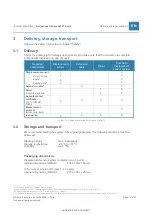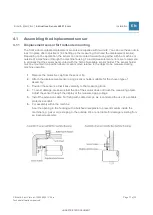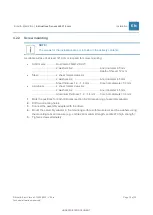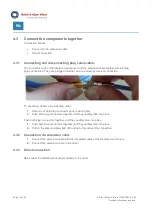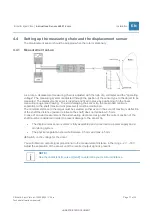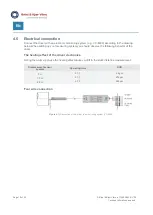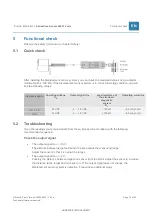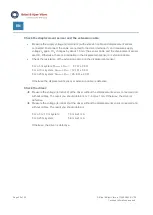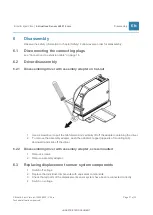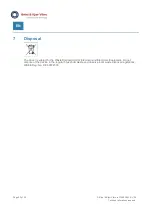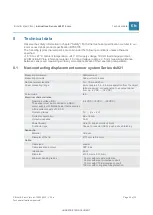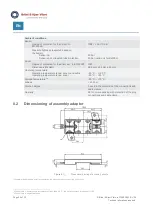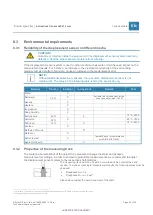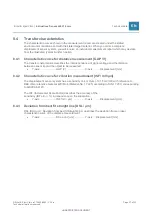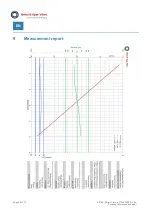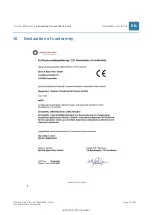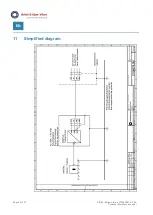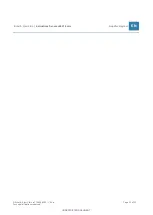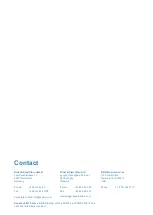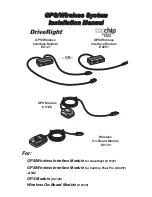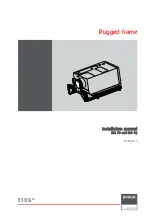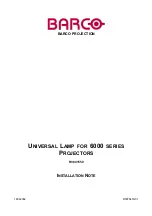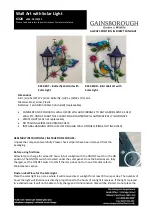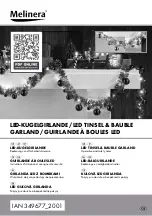
© Brüel & Kjær Vibro
● C104958.002 / V04 ●
Page 25 of 32
Technical alterations reserved!
Brüel & Kjær Vibro
│
Instructions Sensor ds821 4 mm
Technical data
EN
UNRESTRICTED DOCUMENT
8.3
Environmental requirements
8.3.1
Reliability of the displacement sensor in different media
CAUTION!
Humidity or moisture inside the plug result in the displacement sensor system becoming
defective. Seal the plug to prevent moisture from entering.
If the displacement sensor system is used in other media such as water, it can have an impact on the
measurement results. For instance, an increase in the electrical conductivity of the surrounding
medium will, as a matter of principle, cause an increase in the measurement error.
NOTE!
Without additional protective measures, the rear of the displacement sensor is not
media proof. The values in the following table refer to the sensor tip only.
Material
Fraction
resistant
not resistant
Remark
Test
Water
X
Salt water
7,5 %
X
Suitable to a limited extent for the
use of sea water; steel 1.4301
Hexane
X
Heptane
X
Isopropanol
X
Soap Solution
X
Sulfuric acid
20%
-
X
70 °C, 240 h
Ammonia
32%
X
25 °C, 150 h
Nitric acid
15%
-
X
70 °C, 240 h
Acetone
X
Methylen Chloride
X
a
Methanol
X
Salt spray test
X
Tested 28 days for conformance
with DIN EN ISO 9227
Hydrochloric acid
X
8.3.2
Properties of the measuring track
The material characteristics of the object to be measured change the static and dynamic
measurement recordings. In order to achieve reproducible measurements, we recommend to adjust
the displacement sensor system to the respective shaft material.
The measuring track must be at least 20 mm wide and free of scratches and
cavities. To achieve meaningful measurement results, the following values must be
observed:
•
Roughness R
a
≤ 3,6
•
Roughness R
z, max
< 5
μm
b
Please also consider the axial movement of the shaft.
a
in presence of moisture, it can form a bond with hydrochloric acid. There is a risk of pitting corrosion.
b
for large areas of unevenness (5 x 5 mm)

